The boiling cooking method is a simple and effective way to cook food. However, when done incorrectly leads to soggy, mushy, or nutritionless foods. Find out how to use boiling to your advantage and when you should utilize it at home.
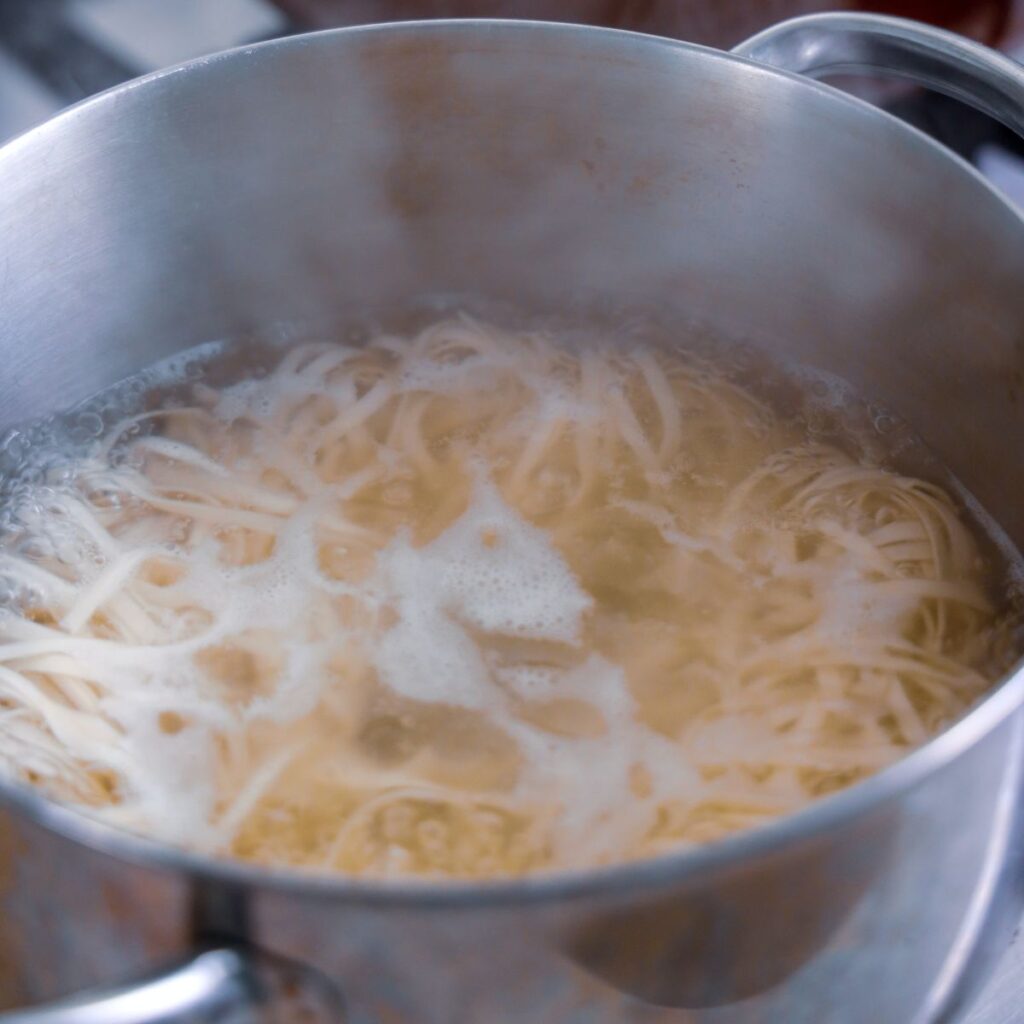
Table Of Contents
- What Is Boiling?
- What is the Cooking Method?
- How To Make Water Boil Faster
- Why Does Sea Level Matter?
- What Foods Should I Boil
- How Much Water To Use
- Should I Season or Flavor the Water?
- Advantages and Disadvantages of Boiling
- What is Al Dente?
- Steps for The Pasta Method
- The Potato Method
- The Rice Method
- How To Boil Vegetables Correctly
- Controlling Nutrient Loss
- Recipes That Are Boiled
What is the first food that comes to mind when I say boiling?
Based on a social media poll taken, your answer was probably potatoes or pasta. Am I right? (Also mentioned were eggs, tea, and lobster.)
This is because for most people boiling is used to make an ingredient, not an actual meal.
Keep reading to learn more about how the boiling cooking method can benefit your kitchen in both ways.
What Is Boiling?
Scientifically, boiling happens when the vapor pressure of a liquid is equal to the pressure of the gas next to it. You may also know this as the boiling point.
This occurs as the water heats and it causes bubbles of vaporized liquid to form inside of the fluid and then rise to the surface where they explode and release the gas.
It's kind of a cool way to think about a process you see all the time, right? Mini-explosions in the pot. However, this process only happens if you heat from the bottom. If you were to stand over it with a flame thrower and only heat the top it wouldn't cause agitation, just evaporation.
Liquid boiling points differ depending on what's boiling. However, at sea level, water boils at 212°F, and the neat thing is that no matter how much you crank the heat, the liquid won't continue to go above that.
Some ingredients require caution when boiling because those mini-explosions in the pot can become increasingly dangerous. Oil is an example. Vegetable oil boils at 300°F. If you're not careful and that oil gets on your skin causes terrible third-degree burns.
What is the Cooking Method?
Boiling is a moist-heat method which means that heat is conducted through moisture like water, stock, or steam. To boil, you need to submerge the food in a rapidly bubbling liquid that is moving constantly.
There are a few different mini-methods for how to boil, depending on what you're cooking. These don't change the method of cooking, but rather focus on the amount of water/liquid needed during boiling.
These methods include the pasta method, potato method, and rice method. These three each approach boiling differently. Vegetables don't have their method, they mostly use the pasta method.
How To Make Water Boil Faster
I bet you've heard someone say "a watched pot never boils" before. Maybe you've even experienced standing around waiting for the water to finally boil so you can get to cooking. You're not alone.
If it feels like it's taking forever, there are a few things in your control.
First is the temperature of the water in the pot. If you need the water to boil faster, put in the hottest water your tap can provide.
Next, the ambient temperature around the pot. The warmer the air around the pot, the faster the pot will heat up. This means that the more things you are cooking on your stovetop the faster the water will boil.
After that, try using a tight-fitting lid. Trapping the evaporating heat keeps the water at a higher temperature and allows it to boil faster.
There is some debate about whether or not adding salt or sugar to the water helps it boil faster, but the results are negligible, impacting only a few seconds. While yes, salt water gets hotter faster, the salt actually raises the boiling point by 0.04°F. The two things combined work against each other, making the results the same as boiling unsalted water.
Why Does Sea Level Matter?
You may see many different sources pointing out that water boils at 212°F at sea level and are wondering why this matters to you.
The higher above sea level you are, the less pressure the air is pushing down towards the pot. So for those mini-explosions to happen in the pot, causing boiling, the water does not have to be as hot for the reaction to happen.
This doesn't impact your cooking too much overall, but it will slow down the cooking process at higher altitudes because the water isn't as hot. It may take an extra minute for your pasta to get to al dente or your rice to finish.
What Foods Should I Boil
The boiling cooking method is primarily used with starches and vegetables. However, older, vintage recipes use it for meats.
I highly recommend against using it on meat because the rapidly moving water and the high temperature actually toughen the proteins in meat and fish. It also does this with eggs, but as long as they are in their shell they maintain some protection.
This goes for other delicate foods as well because they break down with rapid bubbling.
When choosing what foods to boil, consider the flavor, appearance, and firmness of the food you are cooking. Based on the social media poll, these were the most common:
Note. When cooking with a moist-heat method, the food will not brown or caramelize.
Commonly Boiled Foods
- Rice. Most rice grains are great to boil as long as the proportions of liquid to grain are correct. If you want to create rice that does not have grains that stick to each other, boil them in a large quantity of water and strain them.
- Pasta. Both fresh and dry versions of pasta need boiling to cook them but remember that the times vary greatly based on this. Also, pasta shape changes cooking time significantly.
- Potatoes. You can cook potatoes in many different ways, but dishes like mashed potatoes and croquettes require boiling first.
- Vegetables. This an
- Dumplings. Chicken and dumplings is a common meal where a flour mixture is cooked in boiling liquid. Some alternative versions steam the dumplings instead, but it's a matter of preference.
- Eggs. As I mentioned earlier, you only want to do this when there is the protection of a shell. If you were to crack open the egg and try to boil it, the agitated water would break it apart.
- Lobster. Similar to eggs, the shell protects the delicate meat that boiling would otherwise destroy. This method wouldn't work otherwise.
- Meat. Doable, but not recommended because it toughens the meat. Vintage recipes used boiled meat because it was what was available, and cheap cuts with lots of connective tissue were easier to afford. It's been over time that we've discovered braising is better for these cuts.
- Tea. While caffeinated teas are best brewed with a cooler-temperature simmered water to prevent burning, herbal teas can be made with boiling water.
How Much Water To Use
This is a tricky question because it varies based on what you're cooking.
For example, pasta needs 4 quarts of water for each pound of pasta. Green veggies need 2-3 times the volume of water to veggie, but every other vegetable only needs enough to submerge it. With rice, it varies based on grain and how you want the texture to be.
There is no hard and fast rule, which is why there are "mini-methods" that I detail later explaining the procedure for each.
If you're concerned about maintaining a boil once the water gets there, the best rule of thumb is that the more liquid is boiling, the easier it is to maintain.
Should I Season or Flavor the Water?
Abso-freaking-lutely. If you don't I'll cry.
But seriously, yes you should season or flavor the water.
If you're making something that isn't the primary ingredient in a dish, like pasta, you only need to salt the water.
If you are boiling the star of the show ingredient, adding flavor to the water can help elevate it. Dry spices, like star anise, are great for giving the water a little extra flavor boost. This gets lightly infused into the ingredient being cooked.
Fun fact! Boiling causes the rapid concentration of the liquid, which makes flavors stronger. The longer the water boils, the stronger the flavor of the water will get. This isn't too big of a deal for pasta water but is very important when boiling a sauce or soup.
Advantages and Disadvantages of Boiling
What a time to be alive, where boiling doesn't have to be the primary way we make food palatable! As a result, the balance of advantages and disadvantages doesn't hold the same weight it did decades ago.
Instead, look at how boiling helps you in the kitchen.
Boiling is a great way to cook a large amount of food quickly. If you have a large enough pot, you can boil 10 pounds of pasta at once. This isn't super necessary for the home cook but has its purposes.
One of its greatest advantages is the way it impacts the color and texture of the vegetables we are cooking when blanching. This gives you green veggies that are bright and crisp, however, for others, it may be a disadvantage because boiling is a rather slow cooking method. Add in the extra steps of blanching and shocking and it may have just been easier to use a different method, like steaming.
When making soups and sauces, boiling speeds up the process and allows for the liquid to thicken as well as concentrate the flavor. However, if done with the wrong ingredients can make it bitter or astringent.
It can also serve a purpose by being economical. You can use the boiling cooking method to make cheap ingredients, like pasta and rice. It's also useful with things like making homemade stocks, but I would argue, that if you're boiling stock you're making it wrong. Instead, they need to be simmered.
What is Al Dente?
"Al dente" is an Italian texture term translating to "to the tooth." It means that the food is done cooking when it is firm to the bite, not mushy or soft.
Al dente is the standard of quality for boiling anything. If you cook your ingredients to this standard, they will have bright, natural colors as well as be crisp-tender and not mushy. Additionally, they retain a garden-fresh flavor and don't fall apart on the plate.
While you can test doneness in many different ways, especially with pasta, the most reliable method is to break off a piece and try it yourself. Cooking times will vary with every shape of pasta, variety of grain, or size of the vegetable.
Steps for The Pasta Method
As mentioned earlier, there are a few different mini-methods to the boiling cooking method. One of those is the pasta method.
Even though it is called the pasta method, this method is also used for blanching vegetables.
For the pasta method, you need to:
- Prepare the water. Add seasoning and flavoring to the water and place it on the stovetop on high heat.
- Boil. Once the liquid is boiling rapidly, pour in your ingredients and stir.
- Stir. Continue to boil, stirring a few times to prevent them from sticking together.
- Strain. As soon as the food is al dente, drain the food.
There are a few different opinions on what happens to the pasta after draining, including rinsing in cold water or tossing it with a bit of oil. No matter what your preference is, you want to either immediately toss the pasta with sauce and serve, or stop the cooking so the pasta can maintain its al dente texture without overcooking.
The Potato Method
Like anything else, there are multiple ways to cook an ingredient, but the most common way to cook a potato is by boiling it.
Unlike pasta, potatoes and other starchy vegetables should start in cold water. This promotes even cooking from the outside in because the heat distributes evenly around the potato.
Fun fact! Never cool potatoes in cold water after cooking. This makes them soggy.
The best method for cooking potatoes is:
- Prepare. (Optional) Wash, peel, and eye the potatoes, making sure all traces of dark peel are gone.
- Cut. Cut potatoes into uniform pieces. This helps the potatoes cook evenly and makes sure that they all finish cooking at the same time.
- Season. Place the potatoes in a pot and cover them with salted water. About 1 teaspoon of salt to every pound of potatoes.
- Boil. Bring the potatoes to a boil. Remove them with they are fork-tender.
- Drain. Drain the potatoes and allow them to steam dry for at least one minute. This helps prevent the steam from making them soggy before you use them for making mashed potatoes or whatever else is next.
Note that the potatoes don't have to be identical when cut, just neat, uniform sizes so they cook evenly.
The Rice Method
Unlike the previous two versions of the boiling cooking method, the rice method is unique because it needs you to know the exact ratio of water necessary for the variety of grains you're using.
These amounts are usually listed on the packaging, but the liquid may need to be reduced by as much as 25% depending on the texture you are trying to achieve.
Par-boiled rice is a uniquely American thing that led to some rice grains being less dry in the United States than in other countries. While the demand for this has been declining since the 1990s, we do still produce a more hydrated rice grain. Keep this in mind when adding water to your rice.
To use the boiled rice method:
- Rinse. (Optional) Rinse the rice in cold water until the water is clear. This removes excess starch so the grains don't stick to each other as much.
- Season. Combine the rice, salt, liquid, and fat in a pot. Bring to a boil. (Use 1 teaspoon of salt and one ounce of fat for each pound of rice.)
- Boil. Stir the rice, then cover with a lid, reducing the heat to low. Cook until the rice is tender.
- Release Steam. Fluff with a fork or slotted spoon to let steam escape. This keeps the rice from overcooking.
Many different factors impact the cooking time. For example, how tight the lid is. If it's on tightly less steam escapes than a loose lid. Also, the desired moisture of the finished product, as well as the age, freshness, variety, and moisture content of the grain.
How To Boil Vegetables Correctly
Boiled veggies aren't as common now as they were just a few decades now, with steaming becoming the favorite method of choice. However, it is economical, quick, and adaptable to almost anything you cook, making it a cooking method you shouldn't reserve for just starches.
The procedure for cooking vegetables is:
- Trim, peel and cut veggies as needed.
- Fill a pot with 2-3 times the quantity of water as veggies. Salt with 1 ½ - 2 tablespoons of water per gallon of water.
- Bring the water to a boil.
- Add the vegetables to the pot and let it come back to a boil.
- For green veggies, cook uncovered, all others add a lid.
- Cook to the required doneness, then drain the vegetables to prevent overcooking.
- Serve immediately or submerge into ice-cold water to stop the cooking if they are to be used cold or reserved for later.
Even though you may choose to saute the veggies in a sauce later, the cooking method is still considered boiling because that was the primary way they were cooked. The sauteing is more like reheating.
If you are blanching and shocking the vegetables for them to be added to a recipe that is baked or sauteed, then they would most likely fall under the final cooking method used. Blanched and shocked veggies should be cooked just shy of al dente. This prevents overcooking during whatever finishing method you choose; like with this creamed asparagus.
Controlling Nutrient Loss
Boiling often gets a bad rap because many of the nutrients found in the food leach out into the water, making it a less-than-ideal cooking method. Water soluble vitamins like vitamins C and B are often lost almost completely during cooking, while other great minerals like potassium, zinc, calcium and more can see a loss of up to 60%
Some of the major components of nutrient loss include:
- high temperature
- long cooking
- leaching, or dissolving into water
- Alkalis like baking soda or hard water
- plant enzymes that are active at room temperatures but are destroyed by high heat
- oxygen
It's almost impossible to avoid these all completely, but we can control how much we minimize them. Although, to reduce one it often increases another. For example, cutting vegetables into smaller sizes reduces cooking time, but it increases exposed surfaces for leaching.
Hot Tip! Save the water you boil veggies in to use in homemade stock. This transfers the vitamins and minerals over to the stock and helps develop more flavor in it.
Another example is using as little liquid as possible to prevent leaching. However, this usually increases cooking time because there is more temperature loss when the vegetables are added. This results in the veggies sitting in the warm water for longer, waiting for it to come back to a boil. Additionally, the plant enzymes may destroy some of the vitamins in the warm water before the hot water becomes enough to kill them off before damage occurs.
When it comes to boiling, remember that the biggest factors that destroy nutrients also destroy color, flavor, and texture. You can control a lot more than you think by actively nurturing the food you are boiling.
Recipes That Are Boiled
Here are some recipes that cover each of the mini-methods described above.
Pasta Method Recipes
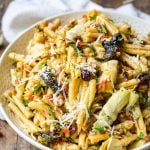
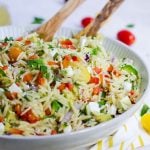
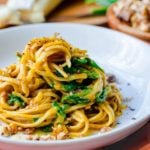
Rice Method Recipes
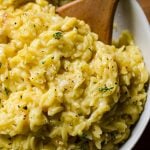
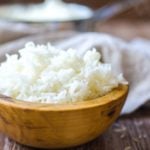
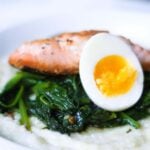
Potato Method Recipes
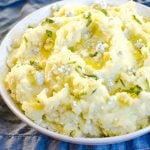
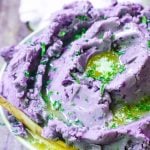
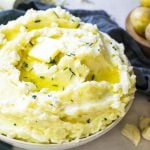
Vegetables That Are Boiled
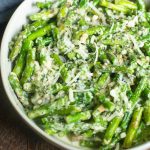
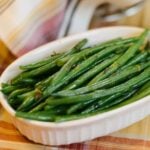


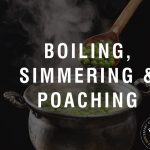
What are your thoughts?